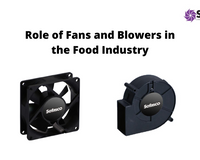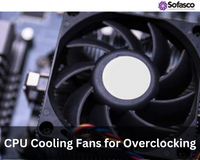Electronic cabinets play a crucial role in modern technology-driven environments, serving as protective enclosures for a variety of sensitive and valuable equipment. These cabinets are used in various industries, including telecommunications, data centers, industrial automation, and more. Their significance lies in safeguarding intricate electronic components from external elements such as dust, moisture, and physical damage. However, one of the most pressing challenges faced by electronic cabinets is the risk of overheating.
As technology continues to advance, electronic devices become more powerful and compact, generating significant amounts of heat during operation. This excess heat can lead to numerous issues, ranging from reduced performance and premature component failure to complete system breakdowns. To address these concerns, the implementation of effective cooling solutions within electronic cabinets has become paramount.
The Importance of Preventing Overheating in Electronic Cabinets
In the world of electronics, heat is an unavoidable by product of energy consumption. As electronic components process data and execute tasks, they generate heat that, if not managed properly, can accumulate within the confines of an electronic cabinet. The consequences of overheating are far-reaching and can negatively impact both short-term functionality and long-term equipment lifespan.
- Performance Degradation: When electronic components exceed their recommended temperature thresholds, they can suffer from thermal throttling, a process in which the system intentionally slows down to reduce heat generation. This results in reduced processing power and overall system efficiency, directly affecting the performance of critical applications.
- Component Fatigue and Failure: Prolonged exposure to high temperatures accelerates wear and tear on electronic components. Solder joints, capacitors, and integrated circuits are particularly vulnerable to thermal stress. Over time, this can lead to premature component failure and costly repairs or replacements.
- Data Integrity and Loss: Overheating can disrupt the integrity of stored data and lead to data loss. For applications such as data storage and processing, this poses a significant risk, as data integrity and availability are paramount.
- Financial Implications: The ramifications of overheating extend beyond technical concerns. Downtime due to equipment failures or maintenance can result in financial losses for businesses, particularly in sectors where uninterrupted operation is essential.
The Role of Electronic Cabinet Cooling Fans
Electronic cabinet cooling fans emerge as the unsung heroes in this endeavor, diligently working to maintain an environment that ensures peak performance and longevity of sensitive devices
At the heart of an electronic cabinet, cooling fans play a vital role in preserving the operational integrity of enclosed equipment. Their primary purpose is to facilitate the efficient removal of excess heat generated by the electronic components during their normal operation. As devices process data, perform computations, and handle various tasks, they produce heat as a byproduct. If left unchecked, this heat accumulates within the cabinet, leading to elevated temperatures and potential performance degradation.
Cooling fans are strategically positioned to create airflow patterns that channel the hot air away from the sensitive components and replace it with cooler ambient air. By fostering this exchange of air, cooling fans effectively reduce the internal temperature of the electronic cabinet, preventing overheating and its associated risks.
Two distinct methods are commonly employed to manage the temperature within electronic cabinets: active cooling and passive cooling. Understanding the differences between these approaches is essential in determining the most suitable solution for specific needs.
- Active Cooling (Using Fans): Active cooling involves the utilization of electronic cabinet cooling fans to facilitate air movement and heat exchange. These fans are powered by electricity and can be controlled to adjust their speed and airflow volume. This level of control allows for precise regulation of the internal temperature, ensuring that the equipment remains within safe operating parameters even in demanding conditions.
- Passive Cooling (Relying on Natural Convection): Passive cooling relies on the principles of natural convection, where heat rises and cool air sinks. It involves designing the cabinet with proper ventilation and airflow pathways that allow heat to naturally dissipate. While this approach can be effective in some scenarios, it has limitations in controlling and adapting to varying heat loads and external conditions.
Working Mechanism of Electronic Cabinet Cooling Fans
The inner workings of electronic cabinet cooling fans are a marvel of engineering, orchestrating the intricate dance of air to ensure the efficient removal of heat and the maintenance of optimal temperatures within the enclosure. Cooling fans operate on a simple yet effective principle: they generate a flow of air that sweeps across the internal components of the electronic cabinet. This airflow serves two crucial functions:
Heat Dissipation: As electronic components process data and execute tasks, they generate heat. Cooling fans drive a steady stream of cooler air across these components, absorbing the excess heat and carrying it away from the sensitive devices. This process prevents heat from accumulating and causing overheating.
Maintaining Ambient Temperature: By expelling the heated air from the cabinet and replacing it with cooler ambient air, cooling fans help regulate the internal temperature of the enclosure. This ensures that the equipment remains within its safe operating temperature range, enhancing performance and longevity.
Types of Electronic Cabinet Cooling Fans
- Axial Fans: Axial fans are the most common type of cooling fans used in electronic cabinets. They move air parallel to the axis of the fan blades, creating airflow within the cabinet. Axial fans are available in different sizes and airflow capacities, and they're often used for general cooling purposes.
- Centrifugal Fans: Also known as radial fans, centrifugal fans move air perpendicular to the fan blades' axis. These fans are capable of generating higher static pressure compared to axial fans, making them suitable for applications where airflow resistance is high, such as when pushing air through dense heat sinks or filters.
- Blowers Fans: Blower fans are a type of centrifugal fan that creates a more focused and directed airflow. They are often used in situations where airflow needs to be concentrated on a specific area or directed towards specific components within the cabinet.
- Cross flow Fans: Cross flow fans, also called tangential fans, have a unique design where the air is blown across a larger width. These fans are particularly useful for cooling along a longer surface area, such as cooling multiple components or PCBs arranged side by side.
Benefits of Using Electronic Cabinet Cooling Fans
Electronic cabinet cooling fans emerge as indispensable assets, offering a multitude of benefits that not only safeguard sensitive equipment but also enhance their overall performance and longevity. Let's explore the advantages of employing these cooling fans within electronic cabinets.
- Consistent Temperature Regulation: One of the foremost advantages of electronic cabinet cooling fans is their ability to maintain consistent temperatures within the enclosure. These fans actively regulate the internal environment, preventing temperature spikes that can lead to performance degradation, component failures, and other complications.
- Enhanced Equipment Lifespan: The prolonged exposure of electronic components to high temperatures can drastically reduce their operational lifespan. Cooling fans play a pivotal role in mitigating this risk. By preventing the accumulation of heat and ensuring that components operate within safe thermal limits, these fans extend the lifespan of sensitive equipment.
- Improved System Reliability: The reliability of electronic systems hinges on their ability to consistently deliver the expected performance without interruptions. Cooling fans bolster system reliability by preventing overheating-related issues.
- Safe Operation of High-Density Configurations: Modern technology trends emphasize compactness and high-density equipment configurations. While these setups offer efficiency and space savings, they also intensify heat generation due to the proximity of components. Cooling fans shine in such scenarios, as they efficiently manage the increased thermal loads.
- Energy Efficiency and Cost Savings: Electronic cabinet cooling fans contribute to energy efficiency by maintaining optimal temperatures without excessive power consumption. Their controlled airflow prevents unnecessary energy wastage while ensuring effective cooling
To gain all the benefits of electronic cabinet cooling fans, one must consider buying high-quality products from reliable suppliers like Sofasco. The company is a global supplier of industrial axial fans, centrifugal fans, cross-flow fans, and blower Fans etc. Since 1981, the company has been supplying high-quality industrial fans for industries like electrical, telecommunication, automotive industry and more. Get in touch with their team to know more about these industrial fans.












